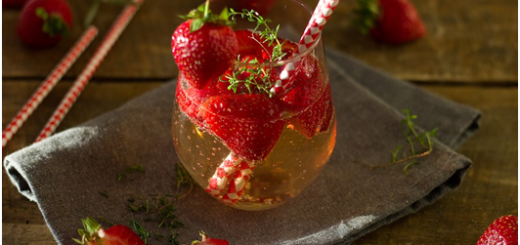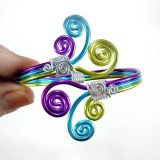5 Easy Ways to Get Rid of Pimples
Is the secret to clearer skin hiding in your kitchen? Homemade acne treatments
from foods such as honey, cucumbers, and grapes may help complement professional treatment from a dermatologist. Here are easy ways you can implement to get rid of them, courtesy of casinolariviera casino en ligne.

1. Apply Ice to the Pimple
The first step in calming down an angry, painful pimple is to apply ice. Wrap some ice in a cloth and press it against the inflamed area for 3 to 4 minutes at a time. If the ice melts too quickly, throw a few cubes in a plastic sandwich bag before wrapping in cloth. Repeat several times throughout the day to soothe the skin and reduce swelling.
2. Apply a Paste of Crushed Aspirin to the Pimple
Aspirin contains salicylic acid, which is super effective at removing excess oil and dead skin. Crush one or two aspirin tablets and mix with several drops of water to form a paste. Then dab the paste directly onto the pimple. This should reduce swelling and redness and also make the pimple less painful. Leave the paste on for 10 to 15 minutes and then rinse thoroughly with warm water.
3. Use An Over-the-Counter Acne Spot Treatment
When choosing a product off the shelf, you can narrow the choices by looking for two important ingredients found in many over-the-counter acne medications. Salicylic acid, mentioned above, is one of these. Another important ingredient to look for is benzoyl peroxide. In addition to reducing oil and removing dead skin cells, benzoyl peroxide also helps kill the bacteria that cause the pimples. While both these ingredients are safe and work in similar ways, which product you choose and how often you apply it depends on your skin’s own unique factors.
And, a word of caution: Both salicylic acid and benzoyl peroxide have a drying effect. Using too much of these products, or using them in combination with certain other products, can irritate the skin1. Only preparations containing 0.5 to 2% salicylic acid are recommended. Moreover, when using benzoyl peroxide, sun exposure should be limited. This means tanning beds, too. Go slowly when trying any new product, and avoid using more than is needed, just like avoiding playing too much games from real money pokies online.
4. Use Makeup with Salicylic Acid to Conceal Pimples
We can’t just hide inside because we have pimples. Fortunately, there are several makeup products available that can help us safely cover up blemishes while simultaneously combatting them. As with the acne spot treatments mentioned above, there are a few key words to look for in the labeling on products such as foundation, face powder, and concealers.
Ingredients in Makeup for Acne-Prone Skin: Makeup for acne-prone skin usually contains similar ingredients found in over-the-counter treatments; one of the most common of these is salicylic acid. Acne-fighting foundations with salicylic acid offer natural-looking coverage for your pimples while treating existing acne and preventing new outbreaks. Neutrogena, E.L. F., and Clinique, are just a few major brands that offer these formulations. Other common ingredients to look for are sulfur, which, like salicylic acid, reduces oil and unclogs pores, and hyaluronic acid, which combats the drying effect of other ingredients and keeps moisture in the skin. As with spot treatments, however, you’ll need to consider your skin type when choosing which product to use. If your skin is already dry, you may want to focus on products that keep pores clear without drying out your skin.
5. Apply a Face Mask for Acne
There are a ton of face masks on the market these days, and many of them target pimples. Again, you’ll see ingredients like salicylic acid and benzoyl peroxide, which treat the acne directly by unclogging pores and reducing inflammation. Another ingredient that works in a similar way is sulfur. Sulfur may bring to mind match heads, hot springs, and the strong smell of eggs, but it is also used to treat pimples, especially milder outbreaks, and is often found in face masks. Sulfur is gentler than salicylic acid and benzoyl peroxide and may be a better choice if you have sensitive skin.
In choosing a face mask for acne, other key words to look for are “exfoliating” and anti-inflammatory.” Depending on your skin type, you can also choose among products that are “calming,” “hydrating,” “soothing,” or that “detox” your skin and have “antioxidant” or “antibacterial” properties. All face masks have different formulations that help to offset the drying effects of the acne-fighting ingredients and soothe the skin. Many use botanicals such as tea tree oil or green tea, both of which have antioxidant and anti-inflammatory properties.

















